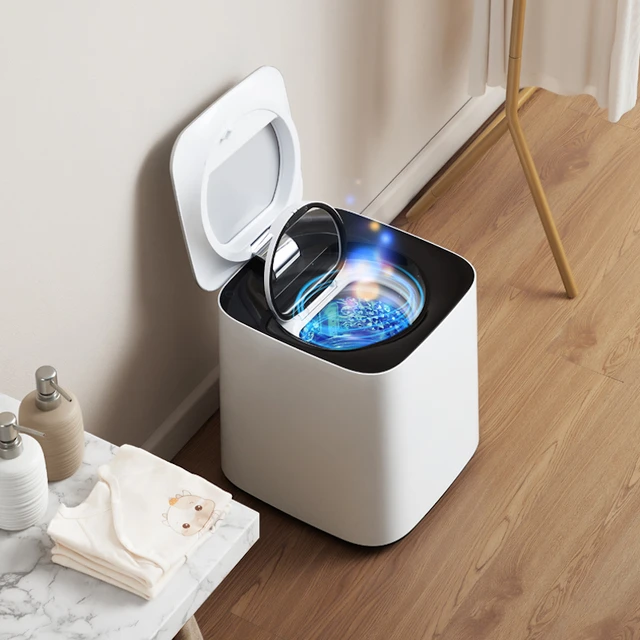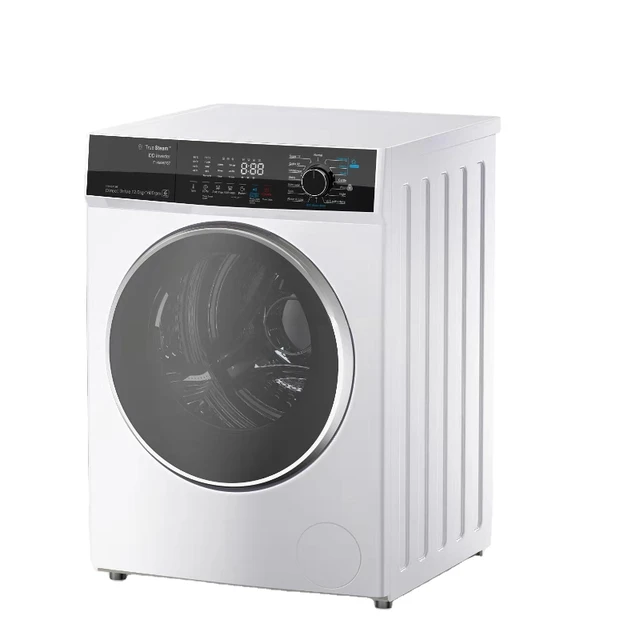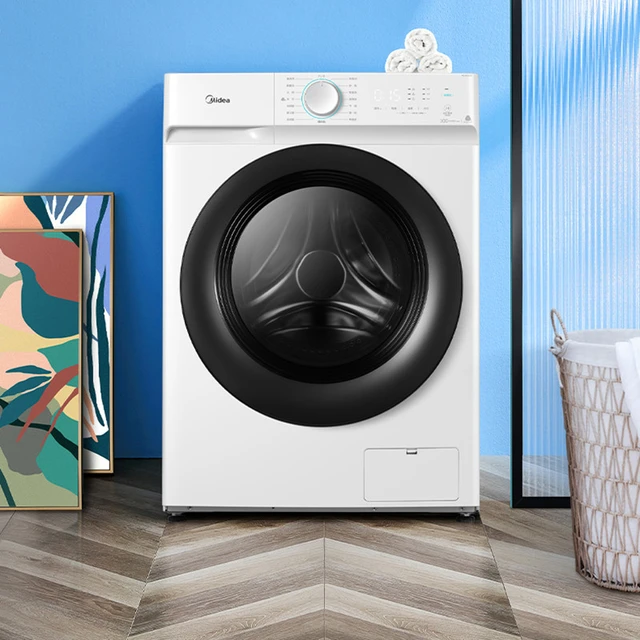 Introduction:
Introduction:
A malfunctioning washing machine can be a major inconvenience, disrupting your laundry routine. Understanding how to fix common washing machine issues can save you time and money. In this comprehensive guide, we will explore various troubleshooting steps to fix a washing machine, including evaluating power and water supply, checking for clogs, dealing with leaks or excessive vibrations, addressing drainage problems, resolving spinning or agitating issues, and basic maintenance tips. By following these guidelines, individuals can confidently troubleshoot and fix their washing machines, ensuring they function efficiently.
 Different types of washing machines:
Different types of washing machines:
There are several different types of washing machines available on the market. Here are some common types:
Top-Load Washing Machine:
In this type of washing machine, the laundry is loaded from the top. It usually has an agitator or impeller in the center that moves the clothes around during the wash cycle. Top-load machines are generally more affordable and require less bending to load and unload.
Front-Load Washing Machine:
Front-load washers have a door in the front through which laundry is loaded and unloaded. They are known for their efficiency and often have larger capacity. Front-load machines typically use less water, require less detergent, and offer better cleaning performance. However, they tend to be more expensive than top-load models.
High-Efficiency (HE) Washing Machine:
High-efficiency machines are designed to use less water and energy compared to traditional washing machines. They are typically front-load washers or top-load washers without an agitator. HE machines prioritize water and energy efficiency, and they often have specific detergent requirements.
Combination Washer-Dryer:
Combination or all-in-one machines are designed to both wash and dry clothes in a single unit. They are popular in small apartments or spaces with limited room for separate washer and dryer units. However, combination machines may have smaller capacity and longer drying times compared to standalone dryers.
Portable Washing Machine:
Portable washers are compact and lightweight machines that can be easily moved and stored. They often have smaller capacities, making them suitable for smaller loads or for individuals with limited space. Portable washers may require manual filling and draining of water.
Smart Washing Machine:
Smart washers can be connected to Wi-Fi or other smart home systems, allowing for remote control, monitoring, and additional features such as smartphone notifications, customized wash cycles, and energy tracking. They often have touchscreen displays or compatibility with smartphone apps.
Commercial or Industrial Washing Machine:
Commercial or industrial washing machines are designed for heavy-duty use in laundromats, hotels, hospitals, or other commercial settings. They typically have larger capacities, higher spin speeds, and more robust construction to withstand frequent use.
These are some of the common types of washing machines available. The choice of washing machine depends on factors such as budget, available space, desired features, capacity requirements, and personal preferences.
 Common materials used in the construction of washing machines:
Common materials used in the construction of washing machines:
Washing machines are typically made from a combination of materials to ensure durability, efficiency, and safety. Here are the common materials used in the construction of washing machines:
Outer Casing: The outer casing of washing machines is usually made of metal, such as steel or stainless steel. These materials provide rigidity and protect the internal components. Some washing machines may also use high-quality plastic or composite materials for their outer shells, offering durability while reducing weight.
Drum and Tub: The inner drum and tub, where the clothes are loaded, can be made from different materials. Stainless steel is commonly used due to its resistance to corrosion, durability, and ability to withstand high spin speeds without warping or imbalance. Some lower-cost models may use porcelain-coated or plastic drums.
Agitator/Impeller: In top-load washing machines, the agitator or impeller, which helps move the clothes during the wash cycle, is typically made of plastic or metal. Plastic agitators or impellers are more common, as they are less abrasive on clothes and make less noise during operation.
These materials are carefully selected to ensure proper functioning, longevity, and safety in washing machine construction. Manufacturers may use a combination of different materials to achieve optimal performance and efficiency based on the design and intended use of the washing machine.
Evaluating Power and Water Supply
Check the Power Source:
Ensure that the washing machine is properly plugged into a functioning electrical outlet.
Check the circuit breaker or fuse box to ensure there are no tripped breakers or blown fuses.
Verify the Water Supply:
Make sure the water faucets connected to the washing machine are fully turned on.
Check for any kinks or blockages in the water supply hoses.
 Checking for Clogs
Checking for Clogs
Clean the Filter:
Locate and clean the filter, typically found near the bottom of the washing machine.
Remove any debris or lint that may be causing a clog.
Clear the Drainage System:
Check for any blockages in the drainage hose or pump.
Remove any debris or foreign objects that may be obstructing the flow of water.
Dealing with Leaks or Excessive Vibrations
Inspect Water Hoses:
Check the water supply hoses for any signs of leaks or cracks.
Replace any damaged hoses to prevent future leaks.
Level the Machine:
Ensure the washing machine is level by adjusting the leveling feet.
This eliminates excessive vibrations during spin cycles.
Examine Door Seals:
Inspect the door seal or gasket for any cracks or tears.
Replace damaged seals to prevent leaks during operation.
Section 4: Addressing Drainage Problems
Clean the Pump Filter:
Locate the pump filter and clean it of any debris or clogs.
A clogged pump filter can hinder proper drainage.
Check the Drain Hose:
Examine the drain hose for any kinks or obstructions.
Ensure the hose is properly connected and positioned above the drain.
Resolving Spinning or Agitating Issues
Check the Motor Coupling:
Inspect the motor coupling, located between the motor and the transmission.
Replace the coupling if it is damaged or broken.
Examine the Belt:
Check the drive belt for any signs of wear or damage.
Replace the belt if it is loose or torn.
Basic Maintenance Tips
Clean the Drum:
Regularly clean the drum to remove dirt, residue, and buildup.
Use a mild detergent and a soft cloth or sponge for gentle cleaning.
Maintain the Dispenser Drawer:
Clean the dispenser drawer regularly to prevent clogs and mold growth.
Remove the drawer and rinse it thoroughly.
Perform Regular Maintenance Checks:
Periodically inspect the hoses, filters, and other components for signs of wear or damage.
Address any issues promptly to prevent further damage.
 Conclusion:
Conclusion:
Knowing how to fix a washing machine can save you time, money, and frustration. By evaluating the power and water supply, checking for clogs, handling leaks or excessive vibrations, addressing drainage problems, resolving spinning or agitating issues, and performing basic maintenance, individuals can troubleshoot and fix common washing machine problems. Embrace the knowledge shared in this comprehensive guide to confidently fix your washing machine, ensuring it operates efficiently and provides clean laundry for years to come.





